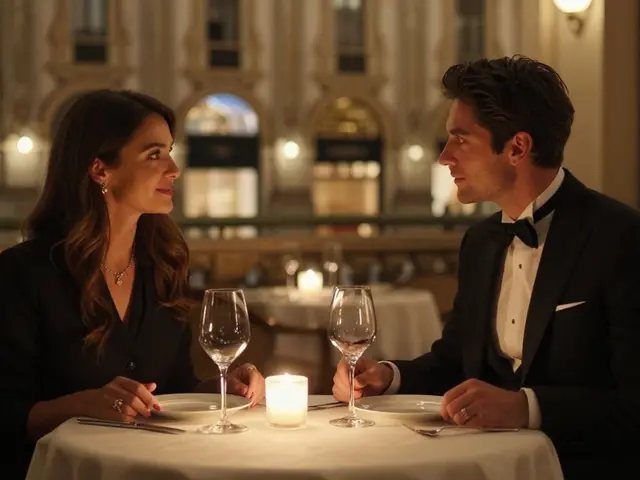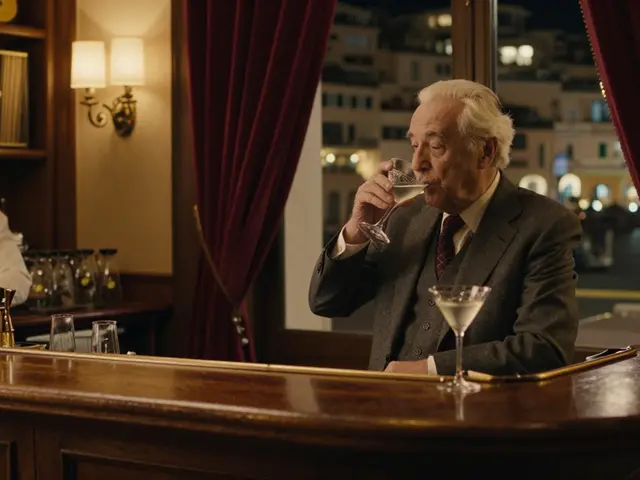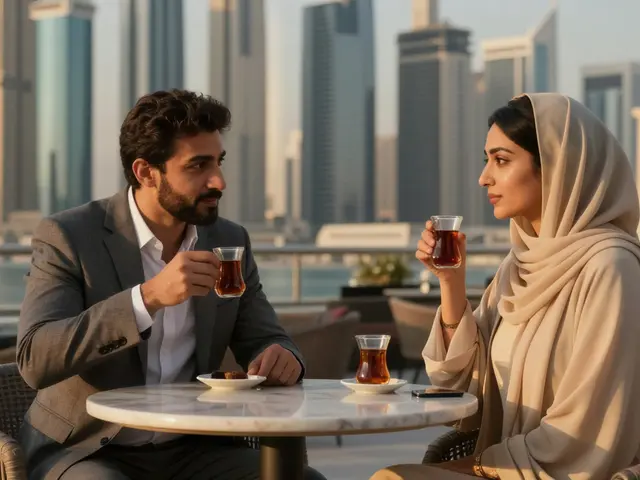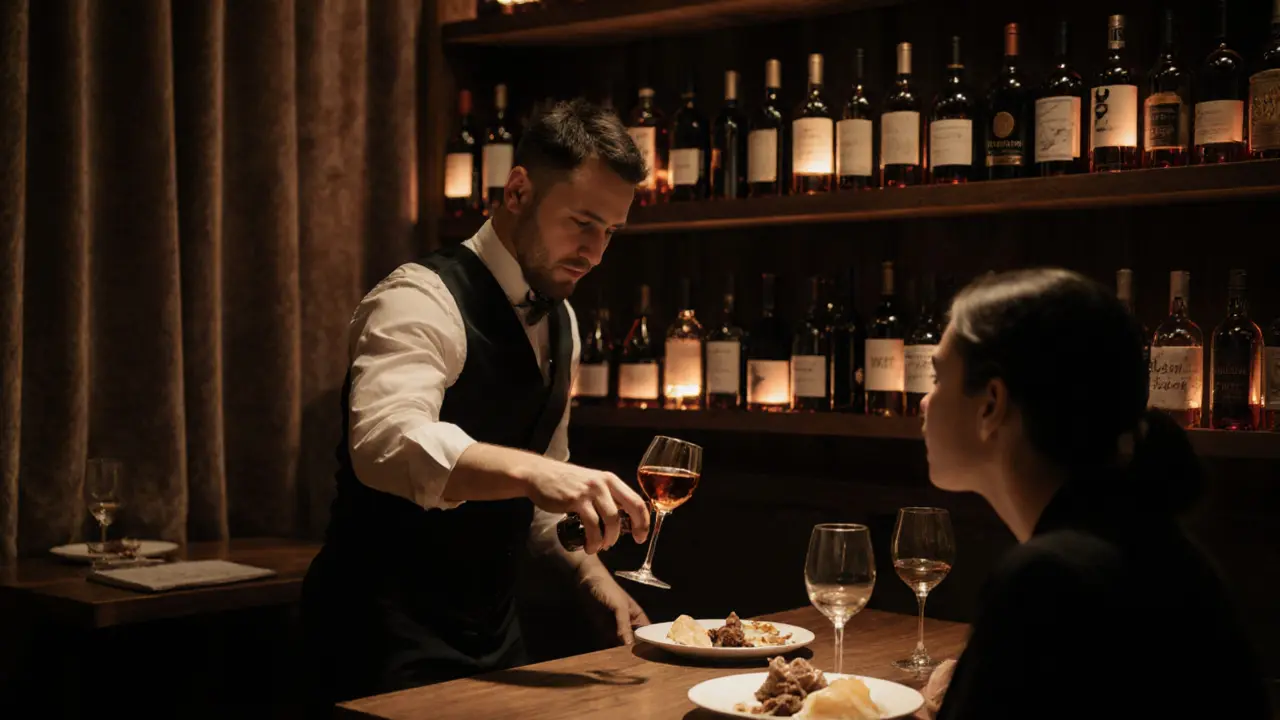
London isn’t just about pubs and cocktail lounges. If you’re a wine lover, the city has quietly become one of the most exciting places in the world to sip, swirl, and savor after dark. Forget the crowded clubs and loud music-this is about quiet corners, expert sommeliers, and bottles you won’t find anywhere else. The real nightlife for wine connoisseurs in London doesn’t start at midnight. It starts when the dinner crowd leaves and the wine bars turn up the lights just enough to see the color in your glass.
Why London’s Wine Scene Is Different Now
Five years ago, London’s wine bars were mostly tourist traps or overpriced spots with a single bottle from France. Today, it’s something else entirely. The city now has over 200 dedicated wine bars, and more than half of them opened since 2020. What changed? A new generation of buyers, importers, and sommeliers started focusing on small producers-natural wines from Georgia, orange wines from Slovenia, and obscure reds from the Italian Alps. These aren’t just trendy labels. They’re wines made by people who harvest by hand, ferment in clay amphorae, and bottle without filtering. And London is one of the few places where you can taste them all in one night.
The city’s wine culture also thrives because of its diversity. You’ll find a Georgian table next to a Spanish bodega, then a Japanese-owned natural wine bar tucked behind a bookshop in Shoreditch. It’s not about the name on the bottle. It’s about the story behind it. And London’s best spots let you hear that story directly from the person who poured it.
1. The Wine Bar at The Ivy Market Grill
If you want elegance without the pretension, head to The Ivy Market Grill’s wine bar. It’s not the main restaurant-it’s a separate space behind a velvet curtain, with low lighting and wooden shelves lined with 300+ bottles. The list changes weekly, but you’ll always find at least 15 wines by the glass, all available in 125ml pours. That’s perfect if you want to try three different styles without committing to a full glass.
What makes this place special? The staff don’t just recite tasting notes. They ask what you liked last time. If you mentioned loving a crisp Sicilian white last month, they’ll pull out a new one from the same region, maybe from a vineyard you’ve never heard of. Their wine pairings with small plates-like smoked eel on rye or aged cheddar with quince paste-are so well thought out, you’ll wonder why you ever ate dinner without wine.
2. Vinoteca (Soho)
Vinoteca opened in 2008 and still feels like the original blueprint for modern London wine bars. It’s not fancy. It’s warm, crowded, and loud in the best way. The walls are lined with bottles you can touch. The staff wear aprons, not suits. And the wine list? It’s split into three sections: classic, natural, and emerging. The “emerging” section is where the magic happens.
Look for the wines from the Balkans. Vinoteca has one of the largest selections of Croatian and Macedonian wines in the UK. Try the Plavac Mali from Dingač-it’s bold, smoky, and tastes like dried figs and sea salt. Pair it with their charcuterie board: prosciutto from Parma, Iberico ham, and pickled walnuts. It’s the kind of combo that makes you stop talking and just nod.
They also host weekly tasting nights on Tuesdays. No reservation needed. Just show up at 7 PM. You’ll get four wines, a short talk from the importer, and a plate of bread and cheese. It costs £25. It’s worth every penny.
3. Noble Rot (Belsize Park)
Noble Rot is the quiet rebel of London’s wine scene. It’s not in the center. It’s in a leafy suburb, above a bakery that smells like butter and yeast. You have to know it’s there. And if you do, you’ll understand why it’s ranked among the top 10 wine bars in Europe by Decanter Magazine.
The menu is small: five cheeses, three meats, and a rotating list of 18 wines by the glass. But here’s the trick-they don’t just serve wine. They serve wine with context. Each bottle comes with a handwritten note: when it was bottled, who made it, what it tasted like when they first tried it, and how it’s changed since. One note on a 2018 Château Musar said: “Tasted it in Beirut in 2022. Still young. Wait until 2027.”
They also have a “Wine of the Month” club. For £45 a month, you get a bottle delivered to your door, plus a letter explaining why it was chosen. Many members say it’s the only thing that keeps them from drinking the same wine every night.
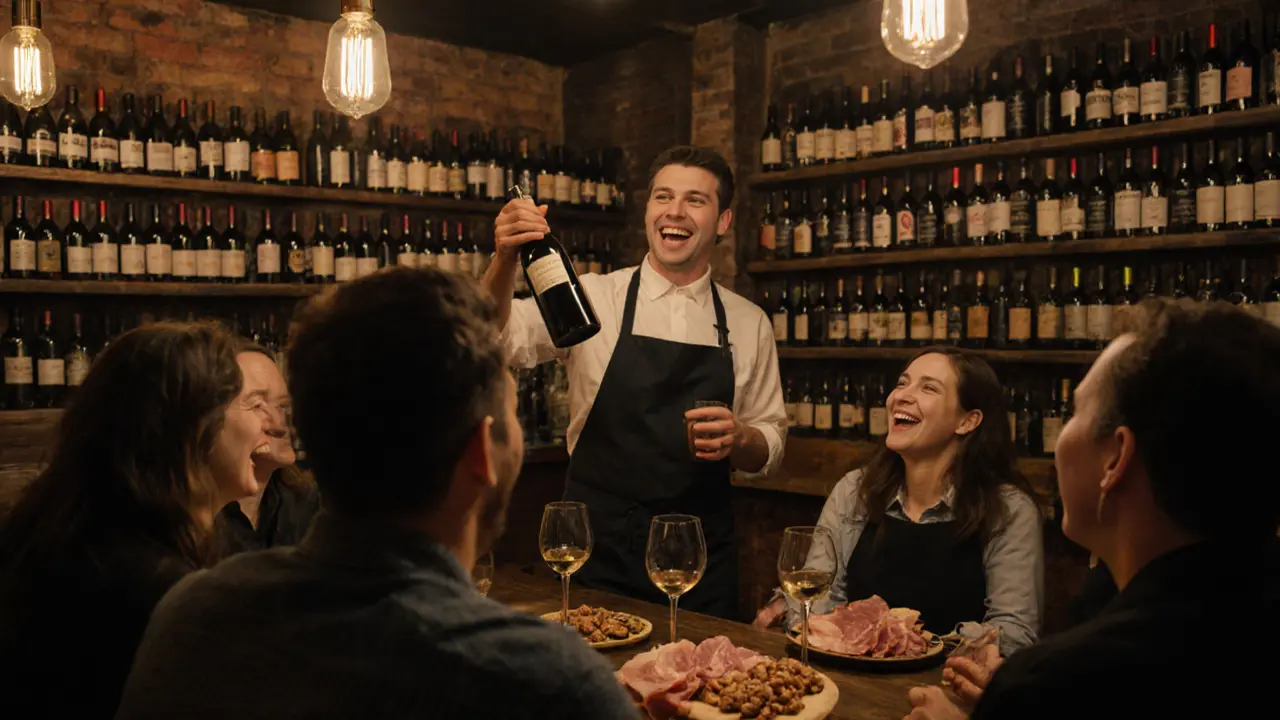
4. La Bodega Negra (Clerkenwell)
La Bodega Negra feels like stepping into a cellar in Madrid. Dark wood, low ceilings, and walls covered in old wine labels. The owner, Ana, is from Extremadura and imports wines directly from her family’s vineyard. You won’t find any big-brand bottles here. Just tiny batches-sometimes only 500 bottles made per year.
Ask for the “Tinto de Bodegas Gómez” from the Sierra de Gata. It’s made from 100% Tinta de Toro grapes, aged in old oak, and bottled unfiltered. It’s earthy, spicy, and has a finish that lingers like a good conversation. Pair it with their patatas bravas-crispy on the outside, creamy inside, dusted with smoked paprika. It’s simple. It’s perfect.
They also do “Wine & Tapas” nights on Thursdays. For £35, you get five small plates and five wines, each paired by Ana herself. No menu. No choices. Just trust her. You’ll leave with a new favorite wine and a list of places to visit in Spain.
5. The Glass House (Camberwell)
Most people don’t know Camberwell has one of the best wine bars in London. The Glass House is tucked into a converted Victorian chapel. The stained-glass windows still glow at night, casting colored light on the wine bottles behind the bar.
This place is all about discovery. They have 40 wines by the glass, all from organic or biodynamic producers. The staff are trained to help you find wines based on flavor, not region. If you say you like “bright, citrusy whites,” they’ll pull out a Greek Assyrtiko. If you say you want something “dark and brooding,” they’ll hand you a Bulgarian Mavrud.
They also have a “Wine Passport.” Buy a stamp card, get a stamp every time you try a new wine. After ten stamps, you get a free bottle from their cellar. Many regulars have filled theirs twice. One man, a retired engineer, told me he’s tried 87 different wines here since 2022. He’s still not done.
What Makes a Great Wine Bar in London?
Not all wine bars are created equal. Here’s what separates the good from the great:
- By-the-glass selection - A great bar offers at least 15 wines by the glass, with options across styles, regions, and price points.
- Staff knowledge - They don’t just read labels. They’ve tasted the wines, met the makers, and can tell you why a bottle changed after three years in the bottle.
- Food pairings - The snacks aren’t an afterthought. They’re designed to bring out the best in the wine.
- Transparency - You should know where the wine comes from, who made it, and how it was made.
- Atmosphere - It should feel like a place you want to stay in, not just pass through.
If a place checks four of these, it’s worth your time. If it checks all five, you’ve found your new favorite spot.
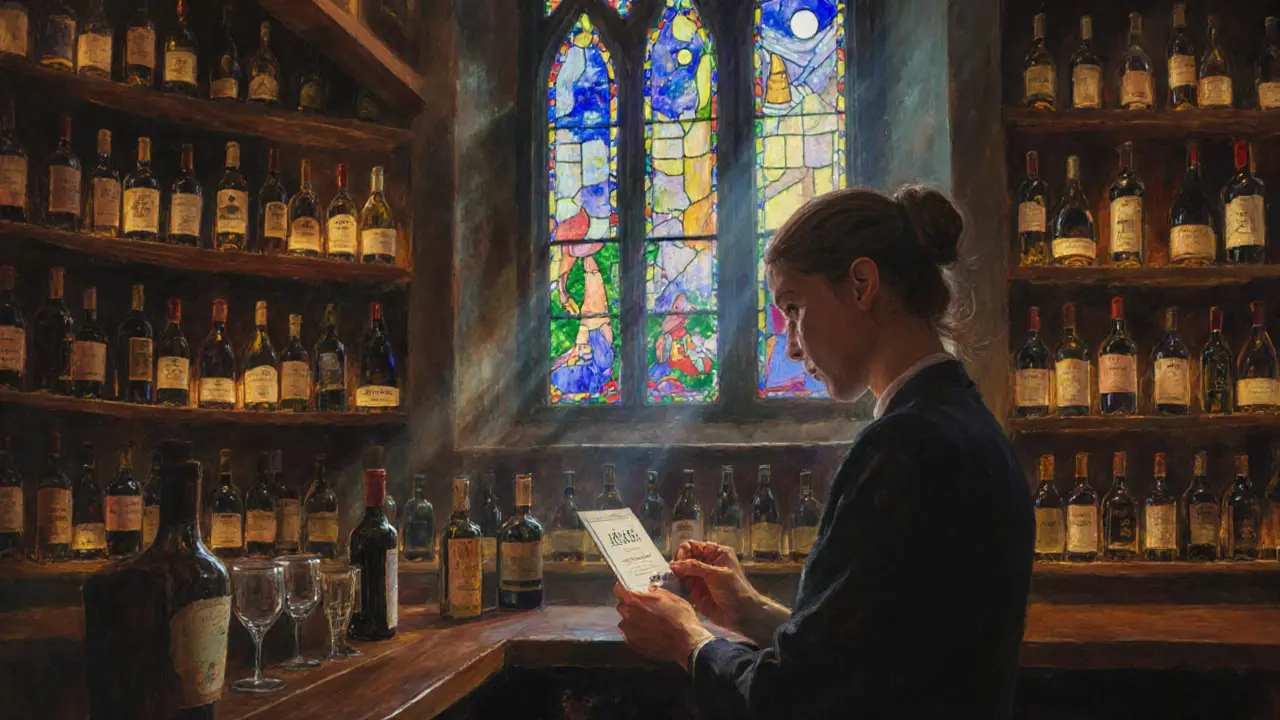
When to Go and What to Order
London’s best wine bars are busiest between 7 PM and 9 PM. But if you want the real experience, go later. After 9:30 PM, the crowds thin. The staff have more time to talk. The wine pours are slower. You might even get a tasting of something not on the menu.
Ordering tip: Don’t ask for “the best wine.” Ask for “something you’ve just tried and loved.” That’s how you’ll find the hidden gems. And if you’re unsure, start with a glass of sparkling wine. It’s the universal opener. Londoners love it before dinner, after dinner, and sometimes just because it’s Tuesday.
Final Thought: Wine Is About Connection
At the end of the day, wine isn’t about scores or vintages. It’s about people. The grower who waited for the perfect rain. The importer who flew halfway across the world to bring it here. The bartender who remembers your name and your favorite bottle.
London’s nightlife for wine lovers isn’t loud. It doesn’t need to be. It’s quiet. It’s thoughtful. And if you take your time, it’ll surprise you.
Are London wine bars expensive?
Not necessarily. Many wine bars offer glasses starting at £8-£12. Places like Vinoteca and The Glass House have affordable options under £15. Premium bottles can cost £50 or more, but you’re not required to buy them. The best way to explore without spending much is to order by the glass or join a tasting night, which often costs under £30 for four or five wines.
Do I need to book a table at wine bars in London?
For most wine bars, no. Walk-ins are welcome, especially during the week. But if you’re going to Noble Rot or The Ivy Market Grill’s wine bar on a Friday night, booking ahead is smart. Some places, like La Bodega Negra, only take reservations for groups of four or more. Always check their website or call ahead if you’re going with a group.
Can I bring my own wine to a wine bar in London?
Almost never. London wine bars pride themselves on their curated selections. Bringing your own bottle goes against their entire philosophy. Some places charge a corkage fee if you do, but most won’t allow it at all. It’s better to trust their staff-they know what pairs well and what’s in stock.
What’s the best time of year to visit London for wine?
Late autumn and winter are ideal. Many wine bars launch new seasonal lists in October and November, featuring bold reds and aged whites perfect for cooler weather. Events like London Wine Week (usually in October) and the Natural Wine Fair (in November) bring in rare bottles and guest producers. You’ll find more variety and more staff available to talk about what’s new.
Are there wine bars in London that serve food?
Yes, and the food is often the highlight. Places like Vinoteca, La Bodega Negra, and The Ivy Market Grill serve small plates designed to match the wine. Think charcuterie, aged cheeses, roasted vegetables, and handmade pastas. Even Noble Rot, which looks quiet, has a kitchen that turns out some of the best cheeseboards in the city. Wine bars here don’t just serve snacks-they serve experiences.
Next Steps for Wine Lovers
If you’re planning a trip, start with Vinoteca or The Glass House-they’re the most welcoming for newcomers. Then work your way to Noble Rot and La Bodega Negra for the deeper cuts. Keep a notebook. Write down the names of wines you like. Ask the staff where else you should go. London’s wine scene is small, but it’s connected. One person’s recommendation can lead you to a bottle you’ll remember for years.
And remember: the best wine isn’t the most expensive one. It’s the one you shared with someone who knew how to tell its story.


